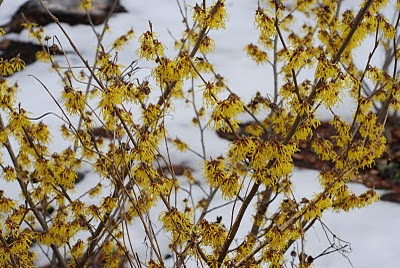 An instant community from a spring plug planting
An instant community from a spring plug planting Eupatorium coelestinum sorting itself out from the mix to form a nice stand
Eupatorium coelestinum sorting itself out from the mix to form a nice stand Aster cordifolius 'Avondale' looking especially blue and floriferous in the late fall
Aster cordifolius 'Avondale' looking especially blue and floriferous in the late fallAs many of my previous entries have indicated I am working in my garden to better understand the practice of developing more-or-less self-sustaining plant communities as gardens. I have what I call my meadow that is several years old now and fully planted, but I continue to introduce new things, especially when I can insert ornamental interest into an otherwise down time of year. I have another similar garden in which I have a very minimal palate of plants on about half of the designated site. I am watching how these self-seed and interact with each other while experimenting with various weed control techniques. Weeds seem to be the biggest impediment to success.
Today I want to report on my newest efforts. In the spring of 2010 I purchased flats of plugs of five species of shade growing native perennials that I thought might get along in an attractive self-sustaining community. (Aster cordifolius 'Avondale', Eupatorium coelestinum, Solidago caesia, Stylophorum diphyllum and Polemonium reptans) I chose three seemingly similar shady locations and planted a mix of the five selections in each spot. After one growing season the plants' response to each of the three sites was vastly different, which is what I regularly find. It is a bit early to make conclusions, but one of the three sites grew some excellent stands of most of the five selections. The three images show a collective image of the aster, eupatorium and solidago growing nicely together but perhaps looking a bit rough. The other two images are of particularly nice stands of the aster and the eupatorium considering they are only one growing season from relatively neglected, newly planted plugs.
I will monitor to see if the polemonium, the weakest performer, does better next year; whether one or more of the selections tends to dominate (my bet is on the eupatorium); and whether the other two sites improve or have elements of the planting die out. Of course, I am especially eager to see if they can dominate the weeds and look good while doing it.








































